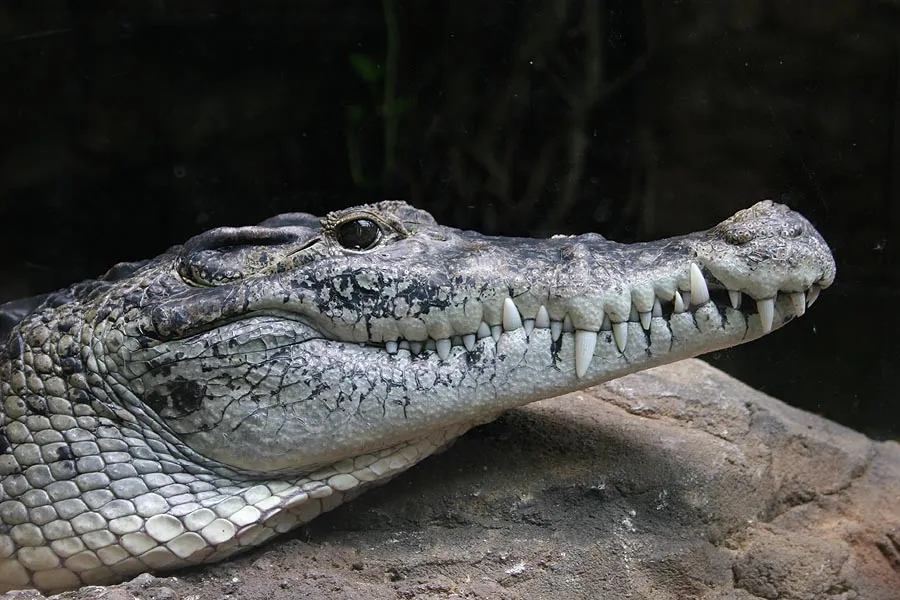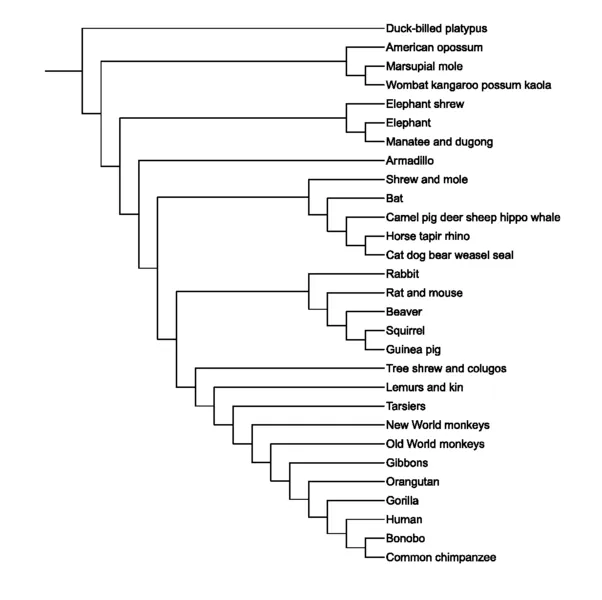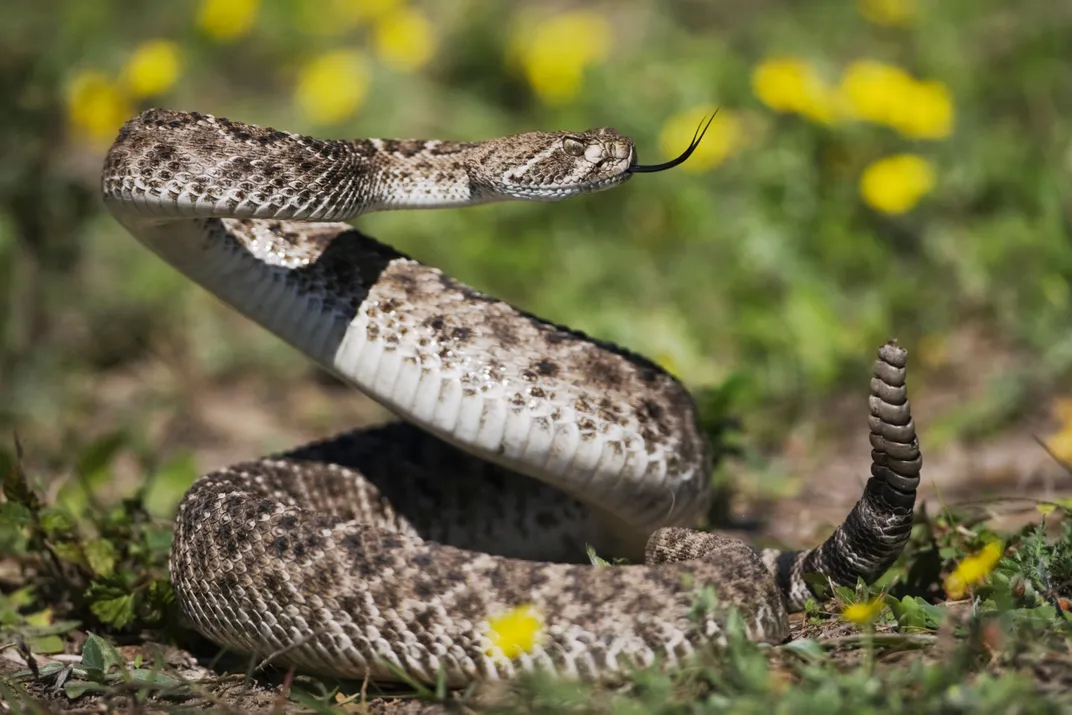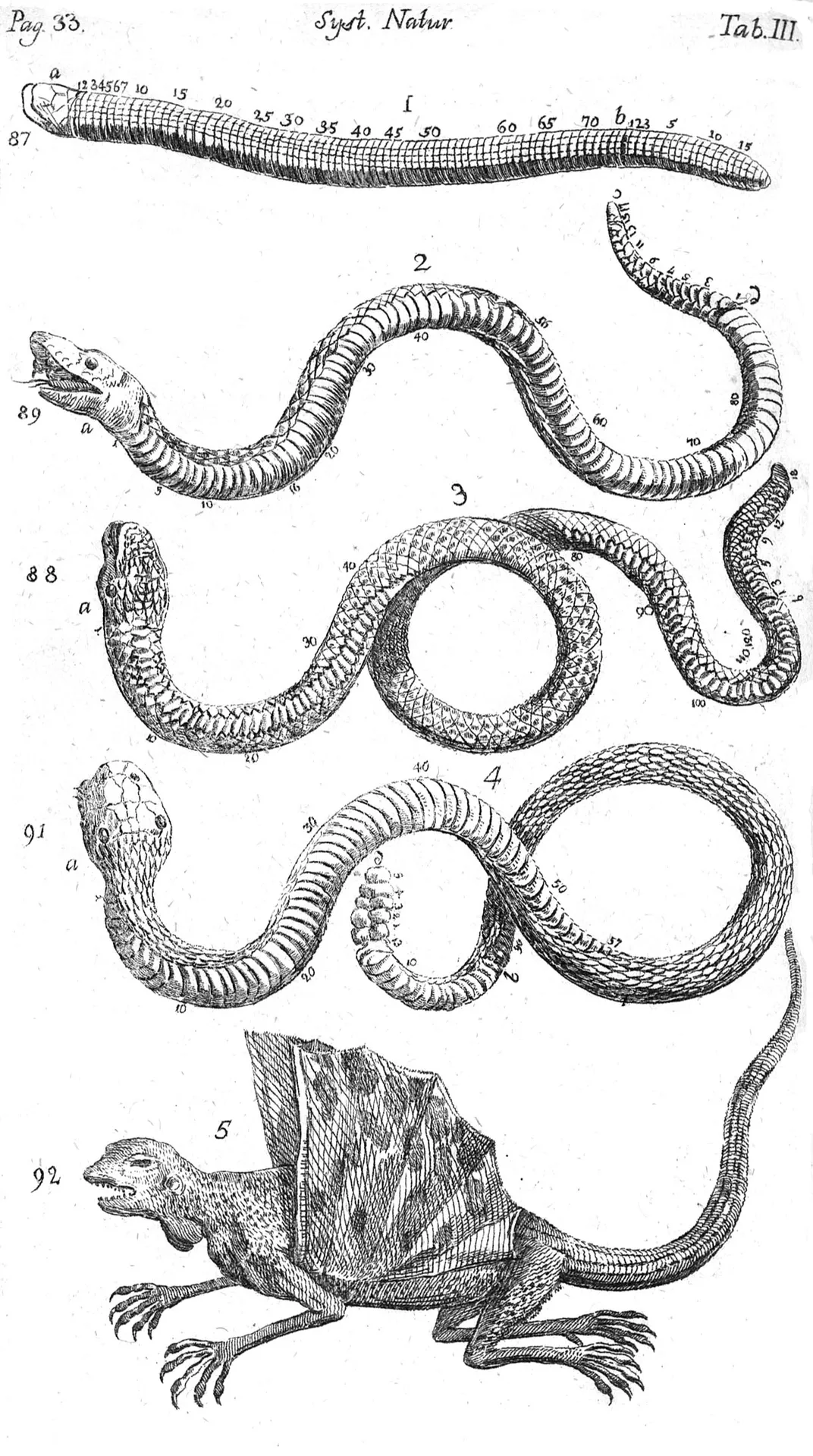A Few Bad Scientists Are Threatening to Topple Taxonomy
Naming species forms the foundation of biology—but these rogue researchers are exposing the flaws in the system
/https://tf-cmsv2-smithsonianmag-media.s3.amazonaws.com/filer/f6/53/f653b86f-a09b-4dcc-b28c-c87a66c67a22/snake.jpg)
Imagine, if you will, getting bit by an African spitting cobra. These reptiles are bad news for several reasons: First, they spit, shooting a potent cocktail of nerve toxins directly into their victims’ eyes. But they also chomp down, using their fangs to deliver a nasty bite that can lead to respiratory failure, paralysis, and occasionally even death.
Before you go rushing to the hospital in search of antivenin, you’re going to want to look up exactly what kind of snake you’re dealing with. But the results are confusing. According to the official record of species names, governed by the International Commission of Zoological Nomenclature (ICZN), the snake belongs to the genus Spracklandus. What you don’t know is that almost no taxonomists use that name. Instead, most researchers use the unofficial name that pops up in Wikipedia and most scientific journal articles: Afronaja.
This might sound like semantics. But for you, it could mean the difference between life and death. “If you walk in [to the hospital] and say the snake that bit you is called Spracklandus, you might not get the right antivenin,” says Scott Thomson, a herpetologist and taxonomist at Brazil’s Museum of Zoology at the University of São Paulo. After all, “the doctor is not a herpetologist … he’s a medical person trying to save your life.”
In fact, Spracklandus is the center of a heated debate within the world of taxonomy—one that could help determine the future of an entire scientific field. And Raymond Hoser, the Australian researcher who gave Spracklandus its official name, is one of the forefront figures in that debate.
By the numbers, Hoser is a taxonomy maven. Between 2000 and 2012 alone, Hoser named three-quarters of all new genera and subgenera of snakes; overall, he’s named over 800 taxa, including dozens of snakes and lizards. But prominent taxonomists and other herpetologists—including several interviewed for this piece—say that those numbers are misleading.
According to them, Hoser isn’t a prolific scientist at all. What he’s really mastered is a very specific kind of scientific "crime": taxonomic vandalism.
…
To study life on Earth, you need a system. Ours is Linnaean taxonomy, the model started by Swedish biologist Carl Linnaeus in 1735. Linnaeus’s two-part species names, often Latin-based, consist of both a genus name and a species name, i.e. Homo sapiens. Like a library’s Dewey Decimal system for books, this biological classification system has allowed scientists around the world to study organisms without confusion or overlap for nearly 300 years.
But, like any library, taxonomy is only as good as its librarians—and now a few rogue taxonomists are threatening to expose the flaws within the system. Taxonomic vandals, as they’re referred to within the field, are those who name scores of new taxa without presenting sufficient evidence for their finds. Like plagiarists trying to pass off others' work as their own, these glory-seeking scientists use others’ original research in order to justify their so-called “discoveries.”
“It’s unethical name creation based on other people’s work,” says Mark Scherz, a herpetologist who recently named a new species of fish-scaled gecko. “It’s that lack of ethical sensibility that creates that problem.”
The goal of taxonomic vandalism is often self-aggrandizement. Even in such an unglamorous field, there is prestige and reward—and with them, the temptation to misbehave. “If you name a new species, there’s some notoriety to it,” Thomson says. “You get these people that decide that they just want to name everything, so they can go down in history as having named hundreds and hundreds of species.”
Taxonomic vandalism isn’t a new problem. “Decisions about how to partition life are as much a concern of politics and ethics as of biology,” two Australian biologists wrote in a June editorial in the journal Nature on how taxonomy’s lack of oversight threatens conservation. They argued that the field needs a new system, by which the rules that govern species names are legally enforceable: “We contend that the scientific community’s failure to govern taxonomy … damages the credibility of science and is expensive to society."
But the problem may be getting worse, thanks to the advent of online publishing and loopholes in the species naming code. With vandals at large, some researchers are less inclined to publish or present their work publicly for fear of being scooped, taxonomists told me. “Now there’s a hesitation to present our data publically, and that’s how scientists communicate,” Thomson says. “The problem that causes is that you don’t know who is working on what, and then the scientists start stepping on each other’s toes.”
Smithsonian.com spoke with some of these alleged vandals, and the scientists trying to stop them and save this scientific system.

…
If you’re a scientist who wants to name a newly discovered form of life, your first step is to gather two to three lines of evidence—from DNA and morphology, for example—that prove that you’re dealing with something new to science. Then you have to obtain a holotype, or an individual of the species that will serve as an identifier for future researchers. Next you’ll write up your paper, in which you describe your discovery and name it according to taxonomic naming conventions.
Finally, you send your paper off to a scientific journal for publication. If you are the first to publish, the name you’ve chosen is cemented into the taxonomic record. But that last step—publication—isn’t easy. Or at least, it isn’t supposed to be. In theory, the evidence you present must adhere to the high scientific and ethical benchmark of peer-review. Publication can take months, or even years.
However, there’s a loophole. The rules for naming a new animal taxon are governed by the ICZN, while the International Association for Plant Taxonomy (IAPT) governs plants. And while the ICZN requires that names be published, as defined by the commission’s official Code, “publishing” doesn’t actually require peer-review.
That definition leaves room for what few would call science: self-publishing. “You can print something in your basement and publish it and everyone in the world that follows the Code is bound to accept whatever it is you published, regardless of how you did so,” Doug Yanega, a Commissioner at the ICZN, told me. “No other field of science, other than taxonomy, is subject to allowing people to self-publish.”
Thomson agrees. “It’s just become too easy to publish,” he says.
Why not? When the Code was written, the technologies that allow for self-publishing simply didn’t exist. “The Code isn’t written under the assumption that people would deliberately try to deceive others,” Yanega says. But then came the advance of desktop computing and printing, and with it, the potential for deception.
Moreover, the ICZN has no actual legal recourse against those who generate names using illegitimate or unethical science. That’s because the Code, which was last updated in 1999, was written to maintain academic freedom, Yanega says. As the Code reads: “nomenclatural rules are tools that are designed to provide the maximum stability compatible with taxonomic freedom.”
Vandals have zeroed in on the self-publishing loophole with great success. Yanega pointed to Trevor Hawkeswood, an Australia-based entomologist accused by some taxonomists of churning out species names that lack scientific merit. Hawkeswood publishes work in his own journal, Calodema, which he started in 2006 as editor and main contributor.
“He has his own journal with himself as the editor, publisher, and chief author,” Yanega says. “This is supposed to be science, but it’s a pile of publications that have no scientific merit.” (In response to questions about the legitimacy of his journal, Hawkeswood delivered a string of expletives directed towards his critics, and contended that Calodema has “heaps of merit.”)
Raymond Hoser also owns his own journal, the Australasian Journal of Herpetology (AJH). AJH has faced similar criticism since it was launched in 2009, despite claims by Hoser that the journal is peer-reviewed. “Although the AJH masquerades as a scientific journal, it is perhaps better described as a printed ‘blog’ because it lacks many of the hallmarks of formal scientific communication, and includes much irrelevant information,” wrote Hinrich Kaiser, a researcher at Victor Valley College in California, and colleagues in the peer-reviewed journal Herpetological Review.
Publications like these let bad science through, taxonomists say. According to them, vandals churn out names of so-called “new species” in their journals, often when the scientific evidence to support a discovery is lacking. And if the names are properly constructed and accompanied by characteristics that are “purported” to distinguish the species, they become valid under the Code. “As long as you create a name, state intention that the name is new, and provide just the vaguest description of a species, the name is valid,” Scherz says.
Hoser, for his part, doesn’t see a problem. “People complain that we name too much stuff,” he told me. “But that’s bullsh*t. There’s a lot out there.”

…
Taxonomic vandalism usually isn't subtle. Oftentimes, vandals will explicitly steal others’ science to support their so-called "discovery," taxonomists told me. "They don’t do any of the research, they don’t own any of the research,” as Thomson puts it. One of the most common lines of evidence they steal is what's known as the phylogenetic tree.
Phylogenetic trees, not unlike family trees, reveal how different animal specimens are related to each other based on their genetics; specimens that are genetically similar are grouped together. In some cases, those groupings represent species that have yet to be named, which scientists call “candidate species.” Researchers commonly publish phylogenetic trees on the road to discovering a new species, and then use those published trees as evidence for that species’ uniqueness.
However, gathering enough evidence to make a discovery can take months or even years. Meanwhile, culprits like Hoser swoop in. Once the tree is publically available, vandals use it as evidence to justify a “discovery,” which they quickly publish in their personal journals. “Vandals go through literature and comb through phylogenetic trees, find a group in the phylogenetic tree that could be named, and quickly give it a name,” Scherz said.
It’s difficult to pinpoint the total number of species named by vandals, but Thomson estimates there are tens of thousands. Hoser readily admits that he has used this approach to name tens—if not hundreds—of taxa. “I managed to name about 100 genera [of snakes] by basically looking at phylogenetic trees,” Hoser said. Among them was the African spitting cobra, Spracklandus.
Another approach is based on a theory called “allopatric speciation,” or the evolution of new species through geographic isolation.
The theory states that when animal populations are physically separated without opportunities to interbreed, they can grow genetically distinct. Over time, the populations can become separate species—meaning, in simplistic terms, that they can’t successfully reproduce with each other. This is a widely-accepted theory, but not proof in itself. Without DNA samples and a detailed examination of several individuals from each population, it’s not so much a discovery as it is a clue.
Taxonomic vandals have been known to take full advantage of this theory to make “discoveries,” says Kaiser. To find and name new species, they will search for geographic barriers that cut through the range of an existing species, such as rivers or mountains. If the species populations look different on either side of the barrier—on one side they’re red and on the other side they’re blue, for example—vandals will automatically declare them two separate species.
“Taxonomic vandals are saying that these are two separate…[species]…but they really have no scientific underpinning of that statement,” Kaiser said of this approach. Hoser, Kaiser writes, uses both existing phylogenetic trees and allopatric speciation to justify generating "new" species names.
For his part, Hoser maintains that the distinctions are often self-explanatory. “Sometimes it's so bloody self-evident that you don't need to resort to molecular-f***ing-genetics and DNA to work out the difference,” Hoser said. “It's like working out the difference between an elephant and a hippopotamus—they’re obviously different animals. You don’t need to be a Rhodes Scholar to figure out the difference.”
His colleagues disagree. “He puts the name on straight away without any evidence,” says Thomson of Hoser. “It’s like throwing darts at a dart board with his eyes closed, and every now and then he hits a bull’s-eye.”

…
While the ICZN doesn’t have the power to regulate these problems, that doesn’t mean individual taxonomists are sitting quietly by.
The scientific community often opts collectively to reject the names that vandals ascribe, even if they’re technically Code-compliant, according to several taxonomists I spoke with. Strictly speaking, this is against the rules of the Code—the names are official, after all. But according to Wolfgang Wüster, a herpetologist at Bangor University, many herpetologists “are scientists first and nomenclaturists second.”
Kaiser, Wüster and other taxonomists have been leading the fight to stamp out vandalism within herpetology. “The scientific community currently appears almost unanimous in their approach not to use Hoser’s nomenclature,” Wolfgang Denzer, a herpetologist, wrote in a critical review of Hoser’s conquests in the open access, peer-reviewed journal Bonn zoological Bulletin.
As stated, many herpetologists refuse to use the name Spracklandus, a name they say is a product of vandalism. Instead they use Afronaja, the name coined by scientists who first published data, which, taxonomists say, Hoser scooped. Unfortunately, this results in what taxonomists call “parallel nomenclature”: when a single taxon is known by more than one name.
Parallel nomenclature is exactly what the Code was intended to prevent.
And for good reason. Confusion created by parallel nomenclature complicates any process that depends on unambiguous species names, such as assigning conservation statuses like “Endangered” or “Threatened.” As the authors write in the Nature editorial, how a species is classified by taxonomists influences how threatened it appears, and thus how much conservation funding it’s likely to receive. As the authors of the editorial write: “Vagueness is not compatible with conservation.”
Parallel nomenclature could also make it more difficult to acquire an export permit for research, taxonomists say. “If you are in one country that uses vandalistic names and try to export an animal, your import and export permits won’t match, which means animals get held up when you cross borders,” Thomson said.
These kind of detrimental consequences—for science and conservation—are why some scientists are calling for a more dramatic solution: revising the Code itself.

…
The boycott against Hoser’s names remains widespread and “undeniably effective,” Yanega says. So effective, in fact, that Hoser submitted a request to the ICZN in 2013, in which he asked the commission to publicly confirm the validity of the name Spracklandus—a name that is already valid by the rule of the Code.
“He was upset by the boycott,” Yanega says, adding that Hoser was seeking validation from the commission.
“The Commission is asked to rule on these seemingly routine matters because widely promulgated recommendations by some herpetologists to use … Afronaja … instead has resulted in instability in nomenclature,” the case reads.
But the case isn’t just about one genus, one name, and one vandal, say the taxonomists I spoke to. “It’s a test of not only which names are going to stand, but also a test—which is how I see it and my colleagues see it—of scientific integrity,” Kaiser says.
It’s still unclear which way the commission will rule, Yanega says. “It depends on how objective we have to be and how well-phrased the question is before us.” If the question, which is still formulating through internal debate, is whether Hoser’s name is destabilizing taxonomy—that is, phrased as a technical, but not ethical, question—the commission will likely rule against him, Yanega adds.
But it’s possible that the scales may tip the other way, Yanega says. And if they do tip in favor of Hoser, herpetologists I spoke to said that they would have no choice but to abandon the Code altogether. “The rumors among herpetology are that if the Commission rules in Hoser’s favor, then it’s over,” Sherz said. “Then we drop the Code and make our own, because it just can’t work like this.”
The authors of the Nature editorial offer up a solution: move the code under a different purview. Specifically, they suggest that the International Union of Biological Sciences (IUBS)—the biology branch of the International Council for Sciences—should “take decisive leadership” and start a taxonomic commission. The commission, they propose, would establish hardline rules for delineating new species and take charge in reviewing taxonomic papers for compliance. This process, they say, would result in the first ever standardized global species lists.
"In our view, many taxonomists would welcome such a governance structure,” the authors write. “Reducing the time spent dealing with different species concepts would probably make the task of describing and cataloguing biodiversity more efficient.”
But, barring that, a revision of the Code is unlikely to happen anytime soon, Yanega told me. Because the ICZN strives to act in everyone’s best interest, any change requires consensus across the taxonomic community. “Everything is done with some level of cooperation and consensus,” he said. “We would indeed be willing to change the rules, if we could ever get the community to come to a consensus as to how the rules should be changed.” So far, that hasn’t happened.
Part of the problem is that most branches of taxonomy aren’t impacted as heavily as herpetology, where many prominent vandals operate. That’s because herpetology is home to thousands of undescribed species, so there’s plenty of low hanging fruit for vandals to pick. Moreover, “herpetology maybe does attract more interesting characters than other branches of science,” says Wüster. “Reptiles are kind of pariahs of the animal world”—as are some of the people who study them, it would appear.
“Other disciplines within taxonomy don’t have the same sorts of problems with these same sorts of people,” Yanega says. If scientists who study birds and fish, for instance, are less exposed to the problem of vandalism, they’re not going to support a stricter Code, he adds: “To them, it sounds like you're being dictatorial or practicing censorship.”
But, at least to the herpetologists I spoke to, that’s a price that researchers should be willing to pay for good science. “This is a compromise where we might have to give up some academic freedom for the sake of the community,” Kaiser says. “This crime needs to be weeded out.”